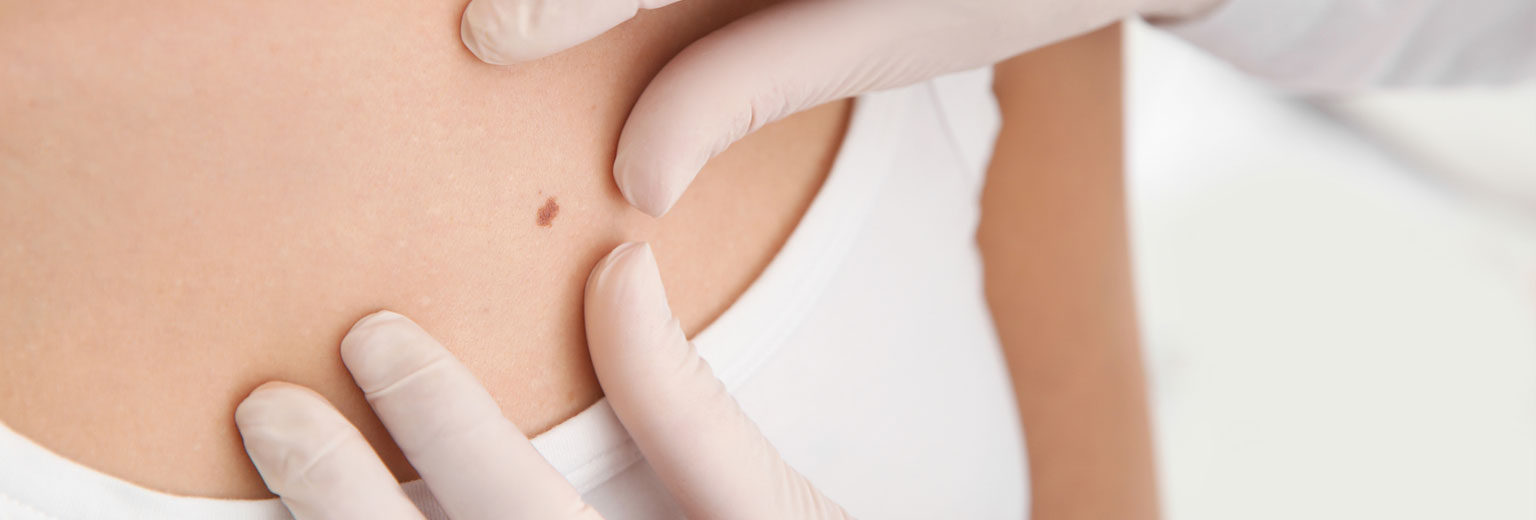Many abnormal skin growths are benign and have no adverse impact on your physical health. While harmless, they can still be uncomfortable, bothersome, or aesthetically unappealing. At Kirsch Dermatology, we offer various treatments to eliminate benign skin growths and restore more natural and healthy-appearing skin.
Common Benign Skin Growths
Some of the more common types of benign skin growths include:
- Cherry angiomas: Cherry angiomas are benign vascular proliferations that can appear anywhere. They usually look like small red papules or dots.
- Dermatofibromas: These firm papules or plaques are usually red or brown and form frequently after mild trauma (e.g. shaving, bug bites).
- Dermatosis papulosa nigra: This condition is characterized by scaly, hyperpigmented papules commonly found on the face and neck especially of individuals with darker skin tones.
- Epidermoid cysts: Cysts may form in the skin spontaneously, from an infection, or due to clogged sebaceous glands.
- Lipomas: Lipomas are a buildup of normal fatty tissue in an abnormal spot. These soft, mobile fatty tumors can be as small as a few millimeters across or as large as ten centimeters or more.
- Milia: Milia or tiny epidermal cysts are a condition where small 1-2 mm white to yellowish papules occur underneath the surface of the skin. They can be extracted without scarring. They often occur on the cheeks, eyelids, forehead and genitalia.
- Nevi (moles or birthmarks): Nevi usually exist at birth or are formed by early adulthood. They may be skin colored or hyperpigmented, and most benign nevi are a solid color with generally even borders and a symmetrical shape. Atypical moles should be evaluated by a dermatologist to determine whether they may be malignant.
- Sebaceous hyperplasia: This condition is when the sebaceous glands (oil glands) surrounding a hair follicle become enlarged, creating a small flesh-colored or yellow papule. These are sometimes mistaken for molluscum contagiosum or basal cell carcinomas.
- Seborrheic keratosis: These common growths are usually scaly, brown, and somewhat greasy. They vary in size and thickness and can occur almost anywhere on the body. These are most common in adults.
- Skin tags (acrochordons): Skin tags are small pieces of skin that extend outward and are only connected to the skin by a thin tissue stalk. They usually form due to friction and are more common in skin folds and creases.
- Warts: Warts are thick, firm skin growths caused by a virus (HPV). They most often form on the hands and feet. While they eventually go away on their own, they are highly contagious and can last for years.
Treatment for Benign Skin Growths
Treatment for most benign skin growths is usually for cosmetic reasons, but treatment may also be recommended if a growth becomes irritated, is contagious (i.e. warts), or becomes infected. Treatments for benign skin growths include:
- Cryotherapy
- Skin peels
- Laser treatment
- Topical creams
- Intralesional corticosteroids
- Surgical excision
- Liposuction (for some lipomas)
- Incision and drainage (for cysts)
- Shaving
- Curettage
The appropriate treatment will be recommended based on the type of skin growth and your preferences.

